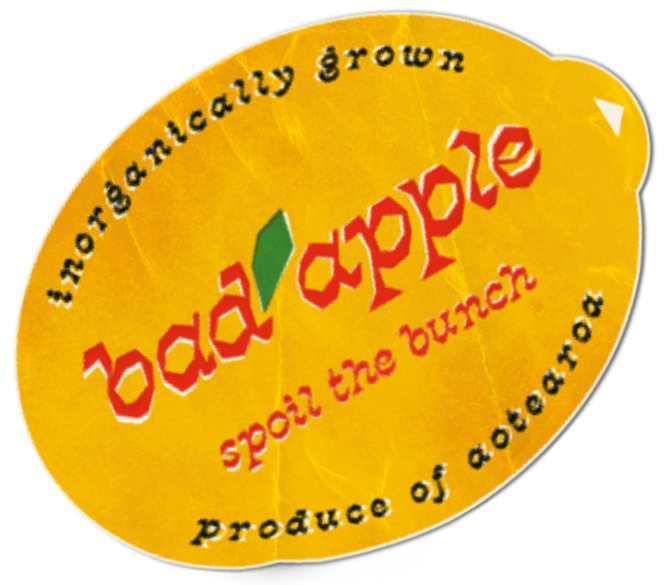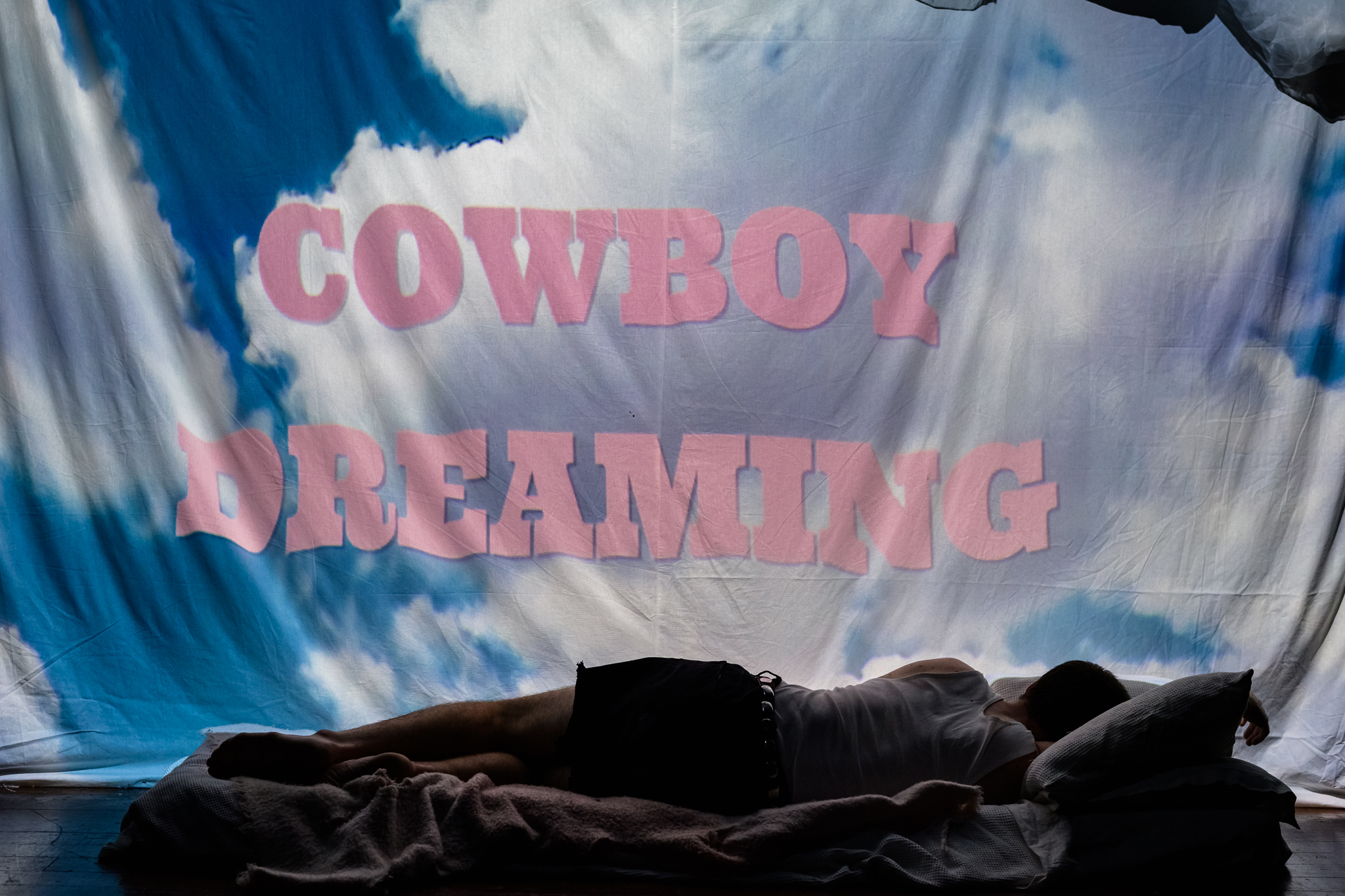There’s nothing more homoerotic than a cowboy.
All that staring into each other’s eyes from across the way. Guns slung from holsters, waiting to be handled. Quick thrusts of pistols spraying bullets, aiming, hoping, needing to lodge into a body.
All. That. Leather.
The Cowboy, popularised by the Hollywood Western in the late 1800s, later made legend by Serge Leone with the spaghetti Western in the 1960s, was initially presented as the epitome of heterosexual masculinity: rugged, austere, and with just the right amount of mystery to keep you coming back for more. Yet, the Americana archetype was soon queer-coded, challenging such ideals and forging a new kind of queer representation in mainstream media.
Without getting too off track with a deep dive into queer cinema, The Cowboy ultimately became a queer pop icon through a series of symbolic contradictions. He no longer existed as the ideal American man who boys wanted to grow up to be and girls wanted to grow up to marry. He became messy, confounding, and cosmic.
Cowboy Dreaming is a fever dream celebration and dissection of The Cowboy and where He fits into our queer subconscious.
As you walk into Basement Theatre’s studio, you’re met with two bodies laid on top of one another in what resembles the makings of a bed. A white sheet is pulled across the stage like a screen, making the already small space even more shallow, pulling audiences all the more closer. Similar white linens drape from the grid, eliciting feelings of tangled sheets and late mornings spent in bed.
Yet this cosy intimacy is quickly disrupted by the show’s opening when performers Emily Hurley (she/they) and Georgie Llewellyn (they/he) chant gnawing sounds in unison while crawling across the floor as a single mass. There is a brief moment of calm before a quick blackout. The show immediately lets you know it’s going to be weird as shit. And boy, oh boy, does it deliver.
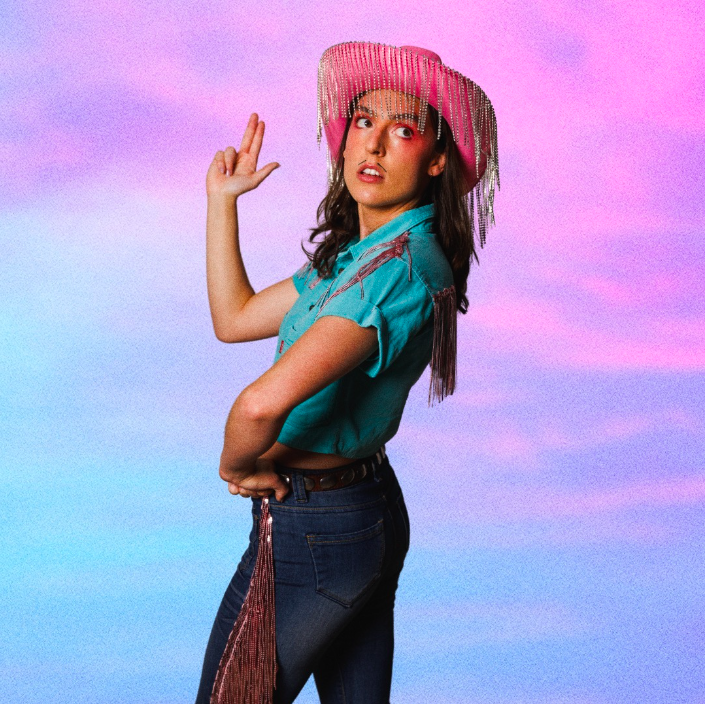
We move into a highlight reel of spaghetti Western cinema, intercut with classic rock hunk Elvis Presley singing about love, projected onto the sheet like a movie theatre. Llewellyn is positioned like a kid sitting too close to the living room TV screen when watching their favourite cartoon, taking it all in. This scene sucks them, us, you, into the Cowboy Dream.
We are also introduced to the show’s very own Cowboy, portrayed by Hurley, matched with sweeping shots of a local beach, rooting us back in Aotearoa after the bombardment of the old American West. This is the first of many instances of gender-bent and blended performance.
What follows is a whirl of dream-like episodes. The audience is pulled from one disembodied moment to another. The vignettes come and go without explanation, similar to how dreams flutter through your psyche while asleep. Seemingly random, often leaving you feeling disoriented, but always with an indication of something bigger you can’t quite put your finger on.
This is how I felt watching Cowboy Dreaming. I wasn’t always sure what I was watching, but I felt it gnawing at my subconscious.
Much like a fever dream, the show isn’t restrained to a single form of being. It spans various mediums, from live performance to shadow puppetry to projections (both digital and analogue) to archival films to prerecorded performances to in-the-moment live footage of the studio. The show is deliriously layered.
On top of its multi-media form, Cowboy Dreaming loves a reference, adding to the levels in which the show can be dissected. It features cheeky bits and pieces of dialogue from classic films, entirely lip-synched monologues, gender performance and strip tease, Elvis Presley, and David Bowie, amongst others. One of my favourite references was the nod to the drunk dancing cowboy dashcam footage (if you know, you know). Yet, these references aren’t played for fan service—some slip by before you even recognise them. Each one reminds the audience of The Cowboy’s checkered past, emphasising that it’s impossible to separate Him from His media context.

Lighting Designer and Technical Operator Alylai Flynn (they/she) nimbly matches the show’s chaotic nature with an in-depth and equally layered design. Some standout moments include creating a phallic shadow behind the performers with clever low-angle front lighting and the crescendo of tie-dye-esque pulses in a moment of becoming for The Cowboy.
However, it was moments when the show slowed down and stripped itself back that it felt the most impactful. This is most notable when Llewellyn helps strip and dress Hurley on stage in preparation for the next scene.
Despite this not being the first time Hurley is topless on stage, nor the most provocative, it struck me as the most vulnerable. It feels like a peek behind the curtain (or bed sheet), both in terms of the mechanics of the costume change but also in regards to their relationship as performers and friends outside the studio’s walls.
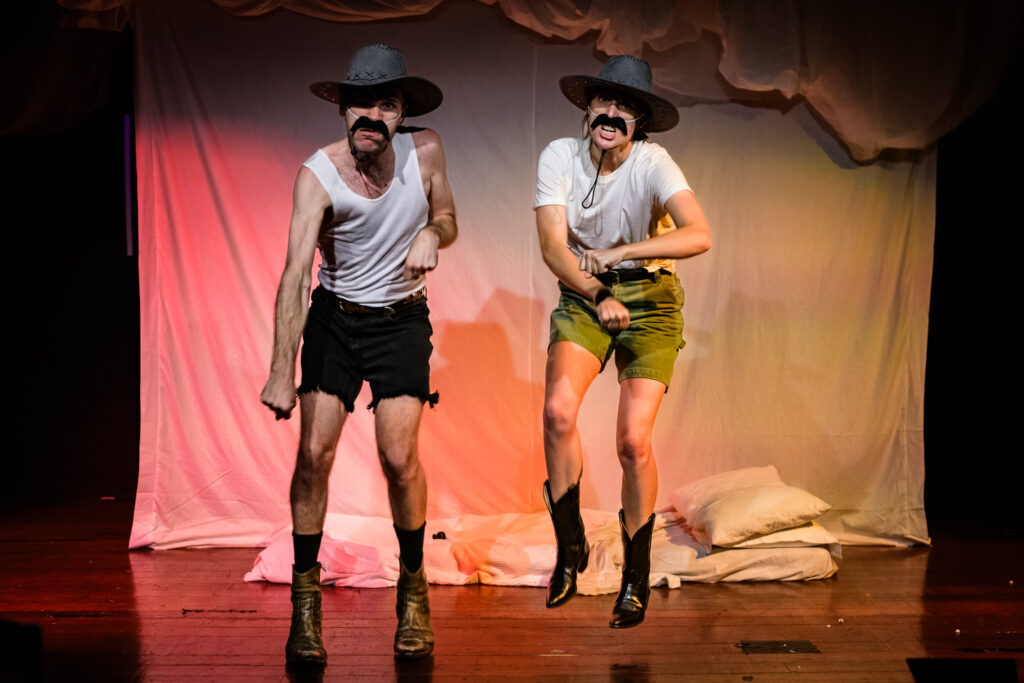
The scene parallels cinema footage shown earlier but with this heightened intimacy. Rather than ripping someone into a corset as performed femininity, Llewellyn reverently helps Hurley into a dazzling dress for the next big show.
She turns around in a sequin gold dress and poorly applied makeup, taking centre stage. This is her moment to shine. Golden reflections glitter the studio as she lip-syncs to In Dreams by Roy Orbison. The performance is earnest, painful, and a well-earned moment of release from the rest of the show’s boisterousness.
“Hurley and Llewellyn put their whole cowbussies into their performances, juggling a slew of characters and performance types.”
The Cowboy Dreaming team should all be commended for pulling off such an elaborate show. Hurley and Llewellyn put their whole cowbussies into their performances, juggling a slew of characters and performance types. Llewellyn’s rendition of both parts of Time to Say Goodbye by Andrea Bocelli and Sarah Brightman is another highlight that had the crowd roaring.
Additionally, the videography, courtesy of Kermath Davies (he/him) of Cuetone Media, was a neat way to pay homage to The Cowboy’s original medium. Within the show’s context, it also either drastically othered the audience or dragged them directly into the action, depending on how and when it was used. However, the piece could have been stricter with the editing of the stints of pre-recorded Cowboy adventuring.
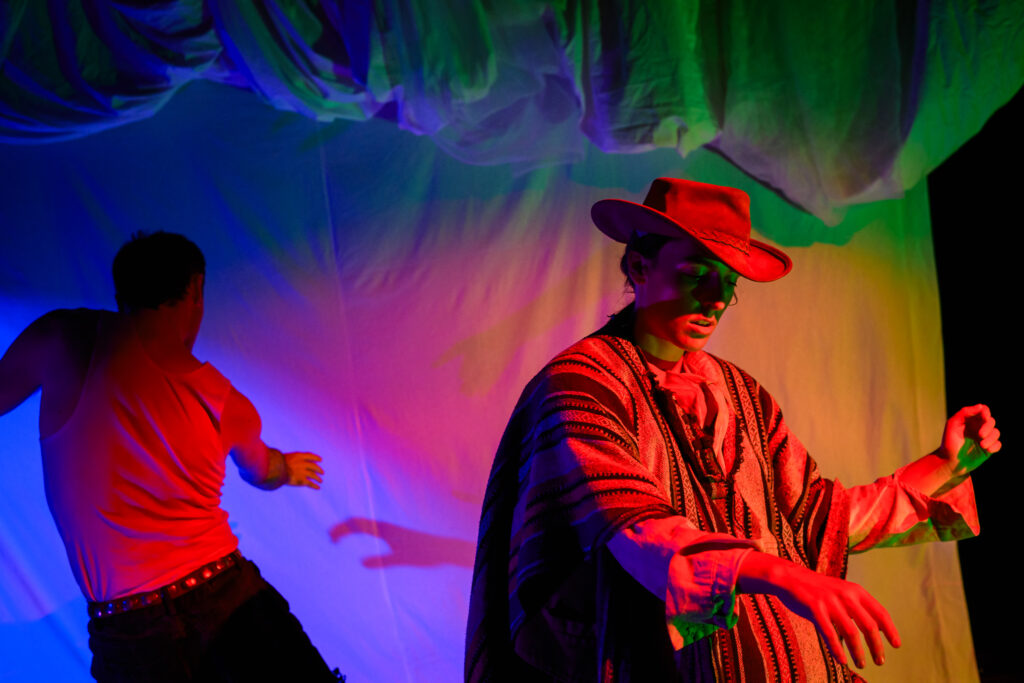
With the strong and definitive direction from Grace Augustine (they/she), what could be a free-for-all of nonsense stitches together as an emotionally whacky unravelling of who this Cowboy we are all dreaming of really is. Through the various iterations of The Cowboy, we see Him stripped back, forced into an ideal, and traversing the wide world before finally arriving at who He is. Or rather, who He is to us.
Cowboy Dreaming is an in-development devised work from Lunar Collaborative with a strong sense of self and intention, all the while leaving you confounded and amused. So, while this may be Cowboy Dreaming’s first rodeo, I sure as hell hope it’s not its last.
Featured photography by Jinki Cambrenero and promotional photography by Megan Goldsman, with graphic design by James Roque, courtesy of Lunar Collaborative.
